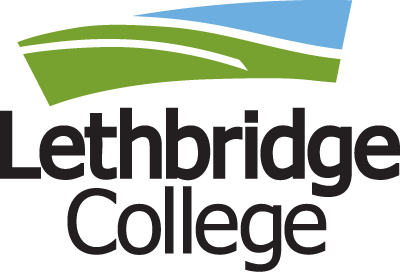This fall, Lethbridge College will unveil its traditional Buffalo Winter Count Robe to the community – likely in late September as part of events surrounding the National Day for Truth and Reconciliation. The robe will be used as a teaching tool, to record major college events, and as a sign of the college’s ongoing work to understand and honour traditional cultures and ways of knowing.
“Winter Counts were created and are still created as a way of communicating, of transferring knowledge,” says Kainai Knowledge Keeper and artist William Singer III (Api’soomaahka/Running Coyote). “Looking at a history, this robe tells the story of the college. It’s for teaching as well. Some of the symbols are straightforward. Others have different meanings. And there are also elements where you have to take action. Each symbol has a story, and they all fit into each other and form a chain until the end, and once you fill up a hide, you start another. There is space left on the college’s winter count so the story can be added to.”
Singer says the robe reflects not just the art of the symbols, but also science and technology. “Our language, whether written with symbols or in syllabic form, is the basis for the development of the science and the technology that the land gives,” he explains. “When talking about the Winter Count and Blackfoot language, both are recognized as forms of science. It also took a lot of science and technology from the students and those who helped create this robe. In this case, a lot of different hands and hearts and thoughts went into this, and got the hide ready to be painted.”

What is a Winter Count?
A Winter Count is a pictorial calendar or history painted on a buffalo hide created by many Northern Great Plains First Nations that carries the story of a community. Traditionally, each nation would choose a single keeper of the winter count; each year, at the first snowfall, the keeper would consult with elders to reach a consensus for choosing a name and pictograph for the year, and then would add that image to the robe. These Winter Counts Robes were used as guideposts in transmitting oral tradition and history. Lethbridge College’s traditional Winter Count Robe, which is expected to be brought to campus in September, will be used to share the college’s history with its community, from the land where it was built, to its foundation in 1957, through to today, and for seasons to come.
Where did Lethbridge College’s buffalo robe come from?
The idea of Lethbridge College acquiring a Winter Count Robe stemmed from the college’s participation in the McConnell Foundation’s Social Innovation Lab on Reconciliation in the Post-secondary Sector. Wanting the college to be a catalyst for change, the Indigenous Services team felt a Winter Count Robe would not only be a prominent symbol of traditional Blackfoot Territory on campus, but it would also reaffirm the close relationship between the college and Indigenous communities in southern Alberta – specifically the Piikani and Kainai First Nations. Please see the story written by Tina Karst on page 16 to learn rest of the story of how the robe came to be at Lethbridge College.
How will Lethbridge College use its traditional Winter Count Robe?
The traditional Winter Count Robe will typically be displayed on campus starting this fall. However, it will be placed in a portable showcase so that it can be transported to other areas to be used in different ceremonial events, including convocation, or to classrooms and other campus spaces to be used as a learning tool for students, community members and friends of the college.
Why did the college choose to have a robe created?
The creation of the robe and commitment to using it as a teaching tool and to record major college events are signs of the college’s ongoing work to understand and honour traditional cultures and ways of knowing. It is also a way for the college to lead in implementing the recommendations of the Truth and Reconciliation Commission. Lethbridge College’s traditional Winter Count Robe will serve as a visual reminder that the college’s history and the history of the Siksikaitsitapi (Blackfoot Confederacy) are indelibly linked.
What are some of the elements incorporated into the story of Lethbridge College’s Winter Count Robe?
Some of the elements painted on the robe include: the Creation story; first contact between Blackfoot people and colonizers (early 1700s); signing of the Lamebull Treaty (1855); signing of Treaty Seven (1877); the opening of the first residential schools (1893); ending of the pass system (1951); the opening of Lethbridge Junior College (1957); the beginning of the Sixties Scoop; first Indigenous students graduate (1960s); name changed to Lethbridge Community College (1967); Native Advisory Council starts (early 1970s); First Indigenous member of the Board of Governors – Marvin Fox (1970s); First Native Student Club (1970s); Indigenous Services start (1979); Piitapawani Student Lounge opens (1980s); last Residential School closes (1996); and much more.



